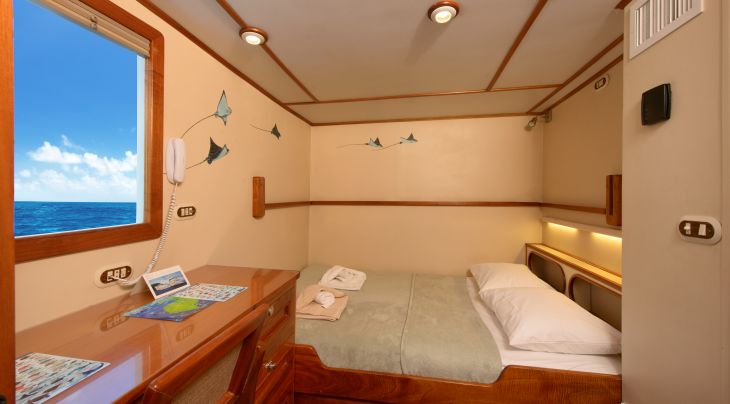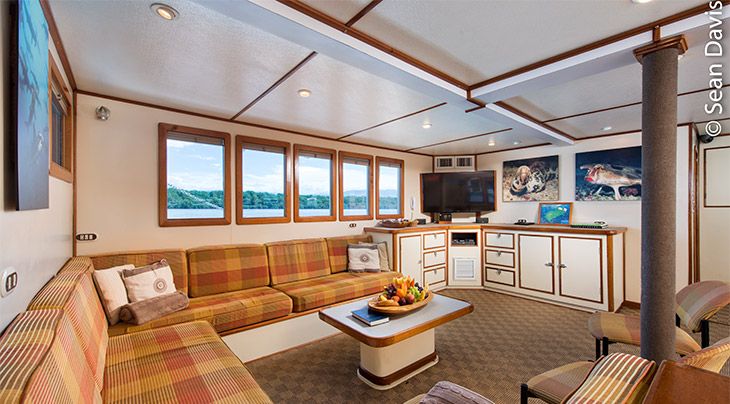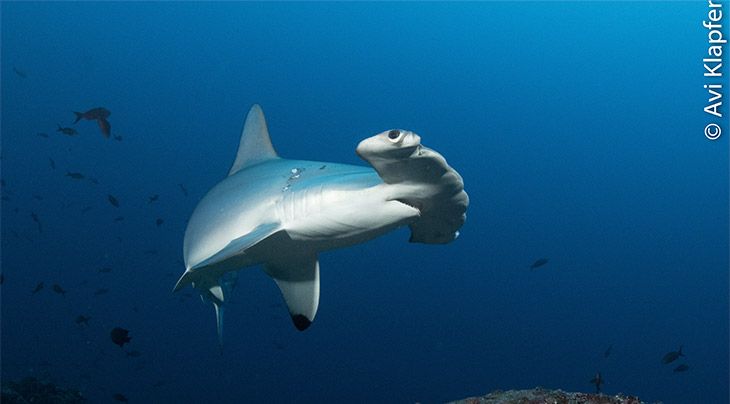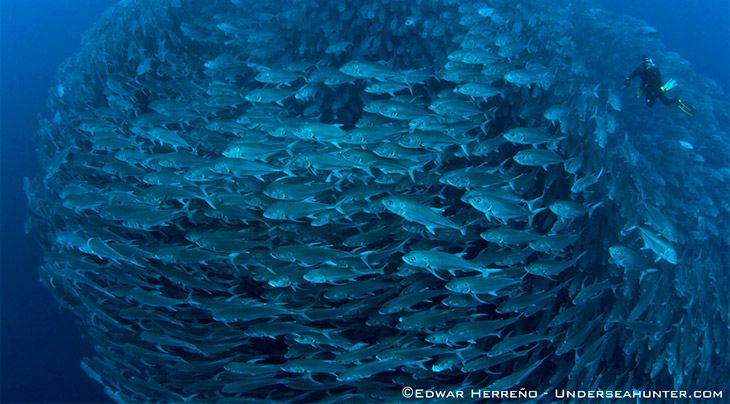- More More
- Blog
- Inspire me
- Groups
- Offers More
- Dive Courses More
- Liveaboards
More

Liveaboard Trips
On-board accommodation offering the opportunity to live right over the dive sites and to experience secluded dives...
Diving regions...
- LATEST AVAILABILITY BY REGION
- Red Sea availability
- Maldives availability
- Indonesian availability
- Socorro Mexico availability
- Galapagos availability
- ALL LIVEABOARD DIVING REGIONS
- Bahamas
- Bikini Atoll
- Caribbean
- Cocos Island
- Destinations
MoreDIVING REGIONS...
Our Top destinations....Why not try....
Find a trip
- Resort
- Liveaboard
Sea Hunter
FLIGHT TIME: 11 hours
WATER TEMPERATURE: 22 - 28°C
HIGHLIGHTS ON-BOARD: Excellent service and food
HIGHLIGHTS UNDERWATER: Schooling Hammerheads, Mantas, Whale Sharks
Overview
The Sea Hunter is 35m of liveaboard comfort and convenience. Specialties are excellence in service, food and non-stop underwater excitement. A distinctive and remote diving location, Cocos Island is for the serious diver! Complimentary Nitrox is also provided.
A superbly stable and robust craft, Sea Hunter is formerly a commercial dive-support vessel, built to serve the oil industry in the Gulf of Mexico. Considered by many as the paramount, purpose-built live aboard vessel operating in the area.
Acquired in 1994 and following eight months of extensive redesign and renovation, the boat has been transformed into the striking vessel she is today. Sea Hunter has 10 guest cabins with private bathrooms, providing live-aboard comfort for up to 20 passengers.
Redesigned and configured as a consummate hybrid, Sea Hunter combines the large platform, functionality and powerful machinery of a workboat with the comfortable and relaxed interior of a modern yacht. She is 35m of flexible capacity and convenience, a dedicated dive cruiser with a global reach, specifically designed and built for long-range expeditions to destinations like Cocos Island.
This spacious boat is everything that a serious diver or photographer could wish for - individual gear storage, private camera/strobe storage shelves with 110 & 220-volt AC power and zero-speed stabilizers. Her roominess and user-friendliness has introduced adventure divers, as well as professional photographers and cinematographers, to an entirely new level of liveaboard facility.
Please click here to view a floorplan for Sea Hunter
SPECIFICATION
- Length: 35m, Beam: 8.1 m, Draft: 2.5 m, Displacement: 250 tons.
- Construction: welded steel with teak work deck.
- Engines: twin GM 16V92 / 1200 total hp. Cruising Speed: 9.5 knots. Maximum Speed: 10 knots.
- Range: 3,500 nautical miles .
- Portable Generators: GM 6-71 75kw. John Deere 105kw. Portable Generator 5kw
- Available Voltage: 110/220 VAC, 60 Hz, 3-phase 208 VAC, 12 VDC
- Fuel Tank: 20,000 US gallons (78 tons). Water Tank: 15,000 gallons (60 tons) 1,800 gallons / day water maker.
DIVING
Two dives are scheduled for the morning, 8:00am and 11:00am and another dive after lunch, around 2:30pm. This schedule can vary depending on events, circumstances and opportunities that may present themselves. The motto is never turn your back on a bait-ball.
Each of the skiffs will reach a different dive site that is alternated on the following dive, allowing the two groups to dive the same areas but at different times of the day. On the way to or from the planned dive sites it is very common for the skiff drivers to seek out the best spots for memorable surface experiences, to watch dolphins, mantas, whales or a promising bait-ball.
All guests are provided with a Safety Kit that includes an extra-large SMB, a powerful storm whistle and a special safety light.
NAVIGATION / SAFETY
3 GPS (Global Positioning Systems). 2 Radars (48 and 32 mile). 2 recording fathometers. Radio Direction Finder SIMRAD. Auto pilot. 2 VHF radios.3 handheld VHF radios, SSB radio (SEA 222).
Starlit Telephone.
Two 25 person life-rafts. Complete boat, crew and passenger safety gear. Firefighting system throughout vessel. Extensive first aid kit. 20 personal diver locator systems.
Schedules & prices
Boat Only price per person includes: transfer between San Jose hotel and Sea Hunter, full board basis on board (excluding final evening meal), including local beer and soft drinks, in a double cabin, 3 dives a day, air, tanks, weight belt and weights. Nitrox included FREE if Nitrox qualified. Park Fees are not included in price quoted.
Extras to be pre-paid:
- Marine Park Fees: $554
Extras to be paid in Resort:
- Fuel surcharge: $200 per person
- Emergency Evacuation Plan: $30
- Airport Departure Tax: $29 paid at airport
SUPPLEMENTS
- Upper Cabin: POA
- Single Supplement: POA
- Starlink Internet Access: $40 for 12GB
Equipment Rental (prices per day)
- Wetsuit: $10
- BCD: $10
- Regulator: $10
- Dive Computer: $18
- Torch: $7
- 15Litre tank (steel): $12
NB - Sea Hunter does not allow sidemount or twin tank diving, as it makes diving more challenging, due to Cocos strong currents, that can be of up to 2 knots. Also, all dives are of up to 1 hour maximum, on a profile of 25 to 35 metres, so more air than what a 15 litre tank offers is unnecessary. For these reasons, there is no support for sidemount or twin tanks.
| Date | Itinerary | Embark | Notes | Price | Enquire |
|---|---|---|---|---|---|
| 11 Jun 2026 | Cocos Island | Puntarenas |
Route: Cocos Island-14 days, 11 Nights. 3 spaces available. 50+ Logged Dives - PADI Advanced. | £6203 | ENQUIRE |
| 25 Jun 2026 | Cocos Island | Puntarenas |
Route: Cocos Island - 11 days, 10 Nights. Enquire for availability. 50+ Logged Dives - PADI Advanced. | £5664 | ENQUIRE |
| 22 Jul 2026 | Cocos Island | Puntarenas |
Route: Cocos Island - 12 days, 14 Nights. Enquire for availability. 50+ Logged Dives - PADI Advanced. | £7820 | ENQUIRE |
| 08 Aug 2026 | Cocos Island | Puntarenas |
Route: Cocos Island - 12 days, 14 Nights. 2 spaces available. 50+ Logged Dives - PADI Advanced. | £7820 | ENQUIRE |
| 11 Dec 2026 | Cocos Island | Puntarenas |
Route: Cocos Island - 11 days, 10 Nights. 15 spaces available. 50+ Logged Dives - PADI Advanced. | £4547 | ENQUIRE |
| 29 May 2027 | Cocos Island | Puntarenas |
Route: Cocos Island - 11 days, 10 Nights. 16 spaces available. 50+ Logged Dives - PADI Advanced. | £5930 | ENQUIRE |
| 11 Jun 2027 | Cocos Island | Puntarenas |
Route: Cocos Island-14 days, 11 Nights. 9 spaces available. 50+ Logged Dives - PADI Advanced. | £6488 | ENQUIRE |
| 25 Jun 2027 | Cocos Island | Puntarenas |
Route: Cocos Island - 11 days, 10 Nights. 9 spaces available. 50+ Logged Dives - PADI Advanced. | £5930 | ENQUIRE |
| 29 Aug 2027 | Cocos Island | Puntarenas |
Route: Cocos Island - 11 days, 10 Nights. 16 spaces available. 50+ Logged Dives - PADI Advanced. | £5930 | ENQUIRE |
| 11 Sep 2027 | Cocos Island | Puntarenas |
Route: Cocos Island - 11 days, 10 Nights. 10 spaces available. 50+ Logged Dives - PADI Advanced. | £5930 | ENQUIRE |
| 07 Oct 2027 | Cocos Island | Puntarenas |
Route: Cocos Island-14 days, 11 Nights. 20 spaces available. 50+ Logged Dives - PADI Advanced. | £6488 | ENQUIRE |
| 03 Nov 2027 | Cocos Island | Puntarenas |
Route: Cocos Island - 11 days, 10 Nights. 20 spaces available. 50+ Logged Dives - PADI Advanced. | £5930 | ENQUIRE |
| 16 Nov 2027 | Cocos Island | Puntarenas |
Route: Cocos Island - 11 days, 10 Nights. 20 spaces available. 50+ Logged Dives - PADI Advanced. | £5930 | ENQUIRE |
| 29 Nov 2027 | Cocos Island | Puntarenas |
Route: Cocos Island - 11 days, 10 Nights. 20 spaces available. 50+ Logged Dives - PADI Advanced. | £5930 | ENQUIRE |
| 12 Dec 2027 | Cocos Island | Puntarenas |
Route: Cocos Island - 11 days, 10 Nights. 20 spaces available. 50+ Logged Dives - PADI Advanced. | £5930 | ENQUIRE |
Dive info
The uninhabited Cocos Island lies in the eastern Pacific, around 340 miles south west of Costa Rica. A rugged, yet green and verdant island that is a National Park and was designated a World Heritage site by UNESCO in 1997. It’s only a small dot of land in the vast Pacific, measuring roughly five miles by two miles, but a beacon for larger ocean creatures and therefore for divers.
The island itself was formed by volcanic activity millions of years ago and consists of four mountain peaks, the highest of which is Cerro Iglesias, at 690m above sea level. This island is covered in thick forest and only the National Park Rangers are allowed to reside there. The island is surrounded by deep waters populated by Whale Sharks, Schooling Hammerhead Sharks, White-tip Sharks, Tuna, Manta Rays & three species of Turtle. Dolphins are often seen and the odd whale if you are lucky.
DIVING
Due to the amount and diversity of marine life in its waters Cocos Island was named one of the best 10 scuba diving spots in the world by PADI and should be on any serious divers ‘To Do’ list.
The only way to visit the island for diving is by liveaboards, which operate year round. The driest time of the year is January to March and the seas are generally calmer from December to May, with better visibility. The rainier time from June to November has a greater amount of plankton in the water, attracting more pelagic species and as expected the visibility is not as good.
There are only two bays with safe anchorages and sandy beaches: Chatham is located on the northeast side and Wafer Bay is on the northwest. Nearby there are a series of smaller basaltic rocks and islets. The water temperature varies between 22 - 28°C with cooler thermoclines, and on land the island is humid and tropical with an average annual temperature of 26. 6°C.
SEASONS
Cocos diving is divided into two major seasons: the dry season (November/December to April/May) and the rainy season (May/June to November). The following will give you a general idea of what the seasons are like, but of course it is impossible to predict what you will see on any given trip, or indeed any given dive. That is part of what makes Cocos Island so special.
The dry season is normally blessed with calm, sunny weather, with water temperatures in the 26-28°C range, and with visibility ranging from 18-30 metres, and active reproduction behaviour observed. Large schools of fish are frequently seen at various distances from the rocks. Hammerhead sharks, individuals and in schools, are commonly spotted in the open water. New born marble rays and whitetip sharks are abundant during this time. During this period divers can usually dive at most dive sites around the island.
During the rainy season, the prevailing south wind limits the number of days for comfortable diving at the east and southwest sides of the island. The calm water of the northeast lee side of the island provides a safe haven for boats and the necessary protection for the marine life.
Water temperature is around 24-26°C, and the visibility averages 12-24 metres. During the months of July through October, hammerhead activity is at its peak; hundreds can usually be seen in very shallow waters, and at very close proximity to the rocks. Cleaning-stations are extremely active for long periods of time. Humpback whales, mothers and calves, usually visit the island every year between July and September.
Schooling whitetips in great numbers can be seen year-round, and there is a chance of seeing dolphins, marble rays, mantas, sailfish, whale sharks and other marine mammals throughout the year as well. The tiger shark is a year round resident at Cocos.
Considering that it is such a nutrient-rich environment, and since it is the only island for many miles around, Cocos acts as a magnet for the large pelagics that are always to be found there. Divers are likely to be impressed by the marine life in this area, no matter what time of year they visit.
It is important to remember that Cocos weather is classically unpredictable, and so it is hard to predict exactly what mixture of marine life you will get on any one trip at any time of year.
Diving experience
Whilst diving at Cocos Island is extraordinary & beautiful, the Cocos Island area is very remote and suited to experienced divers. To get the best possible experience, we strongly recommend that you are at least Advanced Certified with a Deep Diver speciality. Divers should have around 40–50 hours of experience to really enjoy this bucket list destination.
Currents and visibility can be entirely different in just a few hours. Hence, we recommend some previous open water experience & some experience diving with currents. Diving conditions can vary according to the season, with the dry season (December to May) having calmer diving conditions. Cocos is no more difficult than any other Pacific, Indian or Red Sea diving location.
Being Nitrox certified is strongly recommended.
For a map of Cocos Island please click here
LIVEABOARD AND ISLAND COMBINATIONS TAILORMADE
We offer tailormade holidays to Cocos Island. This means that we can organise your holiday based on your requirements. Many guests enjoy a twin centre combination of a Cocos Island liveaboard and an island based holiday in Costa Rica exploring the amazing volcanoes and wonderful wildlife.
FLIGHT INFORMATION
Cocos Island is accessed through Cost Rica and flights into the capital, San Jose, are recommended. British Airways fly direct from London Gatwick to San Jose, twice weekly in the Summer and three times per week in the Winter. Flight time around 11 hours. Overnight stays are required in San Jose.
PASSPORTS & VISAS
Visas: British nationals do not need a visa to enter Costa Rica. You can stay as a visitor for up to 3 months.
Always check for last minute changes in entry requirements at the Foreign & Commonwealth website www.fco.gov.uk Nationalities other than British citizens should check with their own consular office.
Please always check your own entry requirements, regardless of your nationality.
Passport Validity: Your passport should have at least one day’s validity from the date you are leaving Costa Rica. If you hold a passport other than a British Citizen passport, different regulations may apply.
Evidence of onward travel: Entry to Costa Rica may be refused if you are unable to produce evidence of return or onward travel (for example a return air ticket).
Airport tax
There’s a departure tax of $29 when leaving the country by air. Some airlines have started to include this in ticket prices.
VACCINATIONS & HEALTH INFORMATION
If travelling from the UK, there are no compulsory vaccinations for travel to Costa Rica, but we always recommend protection against typhoid, tetanus, hepatitis A and polio.
Malaria & Dengue. There is a very low risk of Malaria and Dengue is known to exist in Costa Rica and avoidance of Mosquito bites is recommended.
Vaccination requirements are subject to change and should be confirmed before departure. For the most up to date advice please consult your travel clinic or GP. Further information regarding vaccinations for travel to this country can be found at www.fitfortravel.nhs.uk and from your local healthcare provider.
Itineraries
Please note that liveaboard itineraries can change without notice. The itinerary will depend on several factors including, but not limited to, weather, diving ability of guests & the number of other boats already present at the various dive sites. All dive sites visited are subject to weather conditions and are at the discretion of your dive guides and vessel captain.


























Add new review